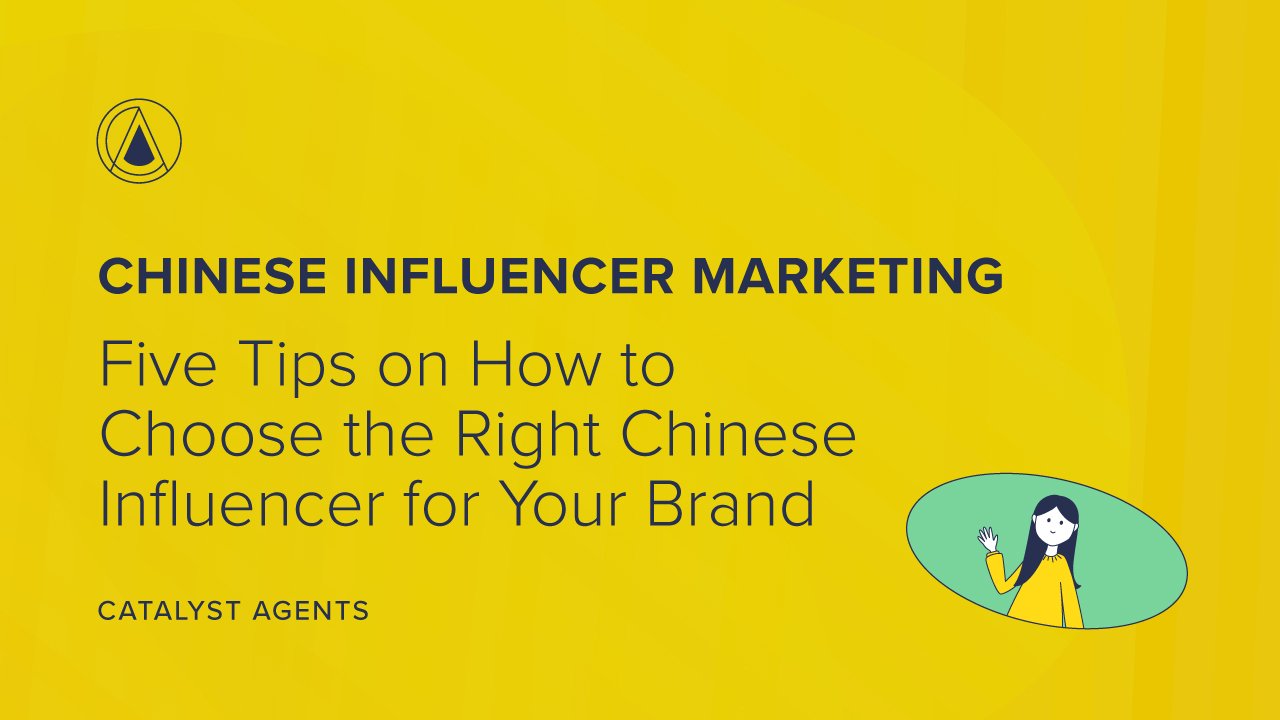CHINESE INFLUENCER MARKETING -- Five Tips on How to Choose the Right Chinese Influencer for Your Brand
Influencer marketing is a powerful way to reach a new audience and drive sales. But with so many influencers out there, how do you choose the right one for your brand?
Here are a few tips:
1. Start by defining your goals. What do you want to achieve with your influencer marketing campaign? Do you want to increase brand awareness? Drive traffic to your website? Generate leads? Once you know your goals, you can start to narrow down your search for influencers.
2. Identify your target audience. Who are you trying to reach with your influencer marketing campaign? Once you know your target audience, you can start to look for influencers who have a following that matches your target demographics. For example, the influencers we would look to partner with for Max Mara would be different from the ones we source for a brand like Versace, not only because of the price difference but also the diverging fashion tastes for someone who would wear one brand versus the other. Max Mara promotes timeless elegance, whereas Versace aligns with someone who goes for a more-is-more style.
3. Consider the influencer's reach and engagement. How many followers does the influencer have? What is their engagement rate? These factors will give you an idea of how well the influencer can reach and engage with your target audience. As a general rule of thumb, the larger the following, the lower the engagement rate because the engagement is divided by a higher denominator (ie. a larger follower number). This is why it’s useful to include nano influencers with less than 10K followers in your campaign as well; often, these nano influencers have a closer-knit community that follows their content.
4. Look for influencers who are a good fit for your brand. Does the influencer's content align with your brand's values and messaging? Do they have a similar tone and style to your brand? It's important to choose influencers who are a good fit for your brand so that their followers will be receptive to your message. Suppose you are promoting on Little Red Book, in that case, it’s important to note that a lot of the popular content being shared is in the format of daily vlogs, and it may make the most sense to opt for a product insertion as a segment into the daily vlog to make it look authentic. Chinese social media in 2023 and going into 2024 will value organic and authentic sharing experiences from content creators. Followers just don’t buy into hard-sell tactics anymore. This means if you are a skincare brand looking to amplify your presence on platforms like Little Red Book, you may want to engage with smaller Chinese content creators who already show brand love for your products (ie. they are already users). This makes it look more authentic when you send them PR products and they decide to incorporate them into their content.
5. Do your research. Before you reach out to an influencer, take some time to do your research. Look at their past campaigns, read their reviews, and see if they have a history of working with brands that are similar to yours. Do they demonstrate an understanding of how to share branded content authentically? Do their past posts align with your company’s values? Are their fans engaged and supportive in the comments?
Once you've found a few influencers who you think are a good fit, it's time to reach out and start a conversation. Be clear about your goals for the campaign and what you're looking for in an influencer. If you're both on the same page, you can start negotiating a deal.
Influencer marketing can be a great way to reach a new audience and drive sales. But it's important to choose the right influencers for your brand. By following these tips, you can increase your chances of success.
Here are some additional tips for choosing the right Chinese influencer for your brand:
Little Red Book, Douyin, WeChat, and Weibo are different Chinese social media platforms for consuming different pieces of content. Make sure you find the right influencer for the right platform by determining your goal for your brand on each platform.
Look for influencers who are active on Chinese social media platforms. This includes platforms like Little Red Book, Weibo, WeChat, and Douyin. Each of these platforms caters to a different type of ‘content consumer’. Little Red Book is more visual with more photos and videos, whereas Weibo is known as Chinese Twitter with a focus on short quips of text supplemented by square photos. WeChat Channels focus on long-form articles while Douyin is more fast-paced and focused on content edited to musical beats.
Consider the influencer's audience demographics. Make sure the influencer's audience matches your target audience in terms of age, gender, location, and interests.
Look for influencers who have a good reputation. Do some research to make sure the influencer has a positive track record and is not associated with any negative scandals.
Negotiate a fair price. Be prepared to pay a fair price for the influencer's services, but don't be afraid to negotiate based on performance metrics.
By following these tips, you can increase your chances of finding the right Chinese influencer for your brand and achieving your marketing goals.




